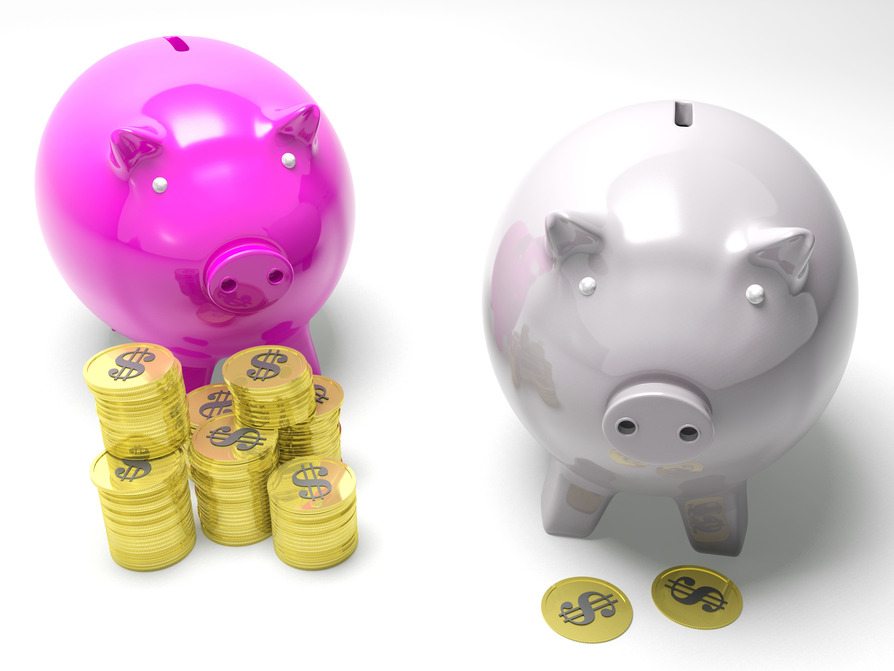Everyone needs an emergency fund to cover any financial blips that pop up on your radar but you don’t have to limit yourself to just one. Splitting up your emergency savings into short-term and long-term accounts is a smart way to prepare for the unexpected. If you’re not convinced that you need separate accounts, here’s a look at how it can work to your advantage:
Benefits of a short-term emergency fund
A short-term emergency fund is a smaller savings account that’s designed to be used when you need to cover something that’s relatively inexpensive, like a new set of tires or a leaky faucet. This is money that you can get to quickly if something unexpected comes up and it should be enough to tide you over until you can tap your long-term savings if need be.
The amount of money you keep in a short-term emergency fund is really up to you. For example, if you’re single, have a steady income and your expenses are relatively low, you might be comfortable with as little as $1,000. On the other hand, you might feel safer having at least one month of expenses to fall back on if you’re married and have children.
The main point of short-term savings is to keep you from having to turn to credit in a pinch. It’s especially important to have some kind of a cushion if you’re in debt payoff mode so you don’t add to your balances. Once you’ve got your short-term account fully funded, you can then move on to building some cash reserves for bigger emergencies.
Where should keep your short-term savings?
Accessibility is the most important thing to consider when deciding where to keep your short-term emergency fund. Ideally, you should choose a savings vehicle that pays some kind of interest but this doesn’t necessarily need to be your primary goal.
The easiest and most convenient option is to set up a savings or money market account specifically for short-term emergencies and link it to your checking account. That way, you can transfer money back and forth any time and anywhere. You should be able to get an ATM or debit card for either type of account and a money market will also offer check-writing privileges. The more options you have for accessing the money, the better.
You could also put your short-term savings into a certificate of deposit to earn a slightly higher rate of interest. The only catch is that if you have to pull the money out before the CD matures, you’d sacrifice some or all of the interest you’ve earned as a penalty. If you decide to go with a CD, look for one that has a three or six-month maturity term. Tying the money up any longer than that increases the odds of getting hit with a penalty if you have to make a withdrawal.
Why you need a separate long-term emergency fund
The goal of a long-term emergency fund is to help you meet the bigger financial challenges that may come along. This is where you’d keep enough money to pay your monthly bills if you were laid off for an extended period of time or cover a major home repair like a new roof. Unlike a short-term emergency fund, you’d continue adding money to your long-term savings over time.
Financial experts recommend keeping at least three to six months’ worth of expenses in an emergency fund so that’s a good starting point to aim for with your long-term savings. If you’re the sole income-earner for your family or you’re self-employed, you may want to think about increasing it nine or even twelve months’ worth of expenses instead.
Your long-term emergency fund should also hold enough money to cover larger expenses you anticipate being an issue in the future. For instance, if you drive an older car you’d want to allocate a certain amount of money in your long-term savings for repairs if you’re worried about it breaking down.
Options for parking your long-term savings
Liquidity isn’t necessarily as important with a long-term emergency fund as it is with short-term savings. Rather than putting all of your money into a high-yield savings or money market account and earning a minimal amount of interest, you can look for vehicles that offer a better rate of return.
If you want to play it safe, setting up a CD ladder allows your money to grow without running the risk of taking a loss. This involves investing money in multiple CDs which mature on a staggered schedule. Using the ladder approach allows you to take advantage of higher interest rates while still maintaining some flexibility since you’re never far from your next maturity date.
Treasury bills and notes also offer a safe investment stretched out over a longer time frame. Treasuries are backed by the U.S. government so the only way you’d lose money is if you cash them out before they mature. T-bills typically mature in less than a year but the terms for notes range from two to ten years.
If you don’t mind taking a bit of a gamble with your savings, you could invest it in the stock market. Buying individual stocks carries the highest degree of risk but you can hedge your bets by investing in mutual funds instead. Compared to a savings account, you’d be able to take advantage of a much higher rate of return by investing in mutual funds. Checking out a particular fund’s previous performance can give you an idea of what you stand to gain by investing in it.
Don’t just set it and forget it
Automating deposits to both your short and long-term emergency savings takes the hassle out of having to make manual deposits but you shouldn’t just leave your accounts on autopilot indefinitely. Regularly reviewing your goals, income and expenses can tell you if you’re saving too much or too little in your emergency accounts.




